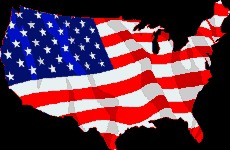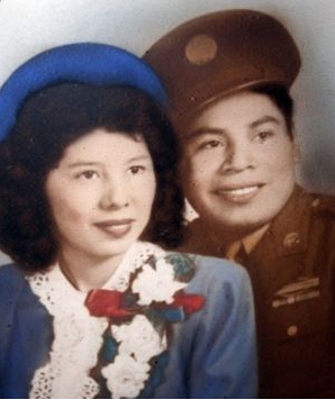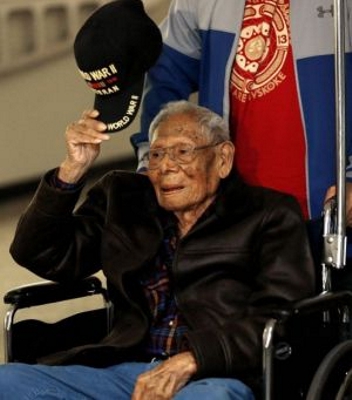|

Phillip Coon

31st Infantry Regiment
Phillip Coon 1919-2014
WWII POW and Bataan Death March survivor, dies
By TIM STANLEY World Staff Writer
 Hesitate for even a moment in your steps, and you were sure to feel it: Hesitate for even a moment in your steps, and you were sure to feel it:
A sharp stick-poke in the ribs.
Still, Phillip Coon had to admit, it was far preferable to the treatment those who fell behind were receiving.
You could hear them shooting stragglers, and you could hear the screams of those who were being bayonetted to death,â he told the Tulsa World years later.
If he tried to turn and see, he added, it just earned him another sharp poke from a guard, forcing him to keep moving, face forward.
By the time the marchers reached their destination, some 21,000, as later estimates would put it, had died.
But of the 54,000, like Coon, who considered themselves lucky to have survived, many of them quickly would come to feel otherwise. Their ordeal as POWs was just beginning.
A decorated World War II veteran and survivor of the infamous Bataan Death March who persevered through three years as a Japanese prisoner of war, Phillip Coon died Monday. He was 95.
A wake is set for 7 p.m. Thursday at First Baptist Church in Okmulgee. A funeral service will be held at 10 a.m. Friday, also at the church. Burial will be 1 p.m. Friday at Fort Gibson National Cemetery, with full military honors.
Smith Funeral Home in Sapulpa is in charge of arrangements.
For years after coming home, Coon, a recipient of a Bronze Star and Prisoner of War Medal, didn’t like to talk about the war.
But when his son grew up to join the military and later his grandson, who has served in Afghanistan and Iraq, it prompted Coon to want to share his experiences with them.
“He was very proud of us serving, too, making three generations of the family” said his son, Michael Coon, a former Army paratrooper.
A book about his father’s life, with emphasis on his war experiences, is due out in November, Michael Coon said. Compiled from interviews for a Rutgers University project, the yet-to-be-titled work will be available on Amazon.
“They went hog wild on us”
A Sapulpa native, Phillip Coon was a full-blood member of the Muscogee (Creek) Nation.
Growing up, he attended the former Euchee Mission School in Sapulpa, which served Indian children, and then Haskell Indian School at Lawrence, Kansas.
He joined the Army in 1941 after graduating from Haskell.
Within days of landing in the Philippines with the 31st Infantry Regiment, Coon found himself in the thick of battle after the Japanese invaded.
What would become known as the Bataan Death March took place in April 1942, when an Allied force of 75,000 that had surrendered was marched more than 60 miles in sweltering jungle heat to Japanese prison camps.
Denied food and water, thousands never made it, either collapsing and dying on the way, or being killed by their captors, who showed little mercy.
“They went hog wild on us” Coon said.
From brutal prison camps in the Philippines, Coon was eventually transported to Japan, where he was forced to work in a copper mine until he was liberated at war’s end.
Over three years as a POW, his weight dropped from 145 to 90 pounds.
Muscogee (Creek) Nation Principal Chief George Tiger said that when Coon was asked later how he survived, he would say because of his faith and because he knew people back home were praying for him. He certainly had a tremendous amount of faith.
Tiger added that in Coon’s death, the Nation has lost a hero.
Closure at last
Later in life, Coon revisited the scenes of those earlier horrors.
A few years ago, he went back to the Philippines. He didn’t want to go, but his wife encouraged him and, there, among other sites, he visited the grave of a good friend who had died as a POW.
In 2013, Coon got the chance to return to Japan.
Participating in that nation’s POW Friendship Program, he spent a week there with other former POWs.
“The trip was a blessing, he said later, but he couldn’t help quipping, “I had a lot more to eat this time.”
Coon gained a lot of closure from his trips, his son said.
“He had held much animosity for the Japanese. But his attitude changed toward them and in general. Even at the VA clinic, they told him he was smiling and laughing more.”
Tiger said: “I always loved to talk to him. I liked to hear what he had to say. He had a lot of things to say about life, about the Creek Nation. We’re going to miss him. We already miss him.”
Coon was preceded in death by his wife of 67 years, Helen Coon; three children, Chester, Phyllis and Linda Coon; and his seven siblings.
Survivors include his son, Michael Coon; seven grandchildren; and 14 great-grandchildren.
|